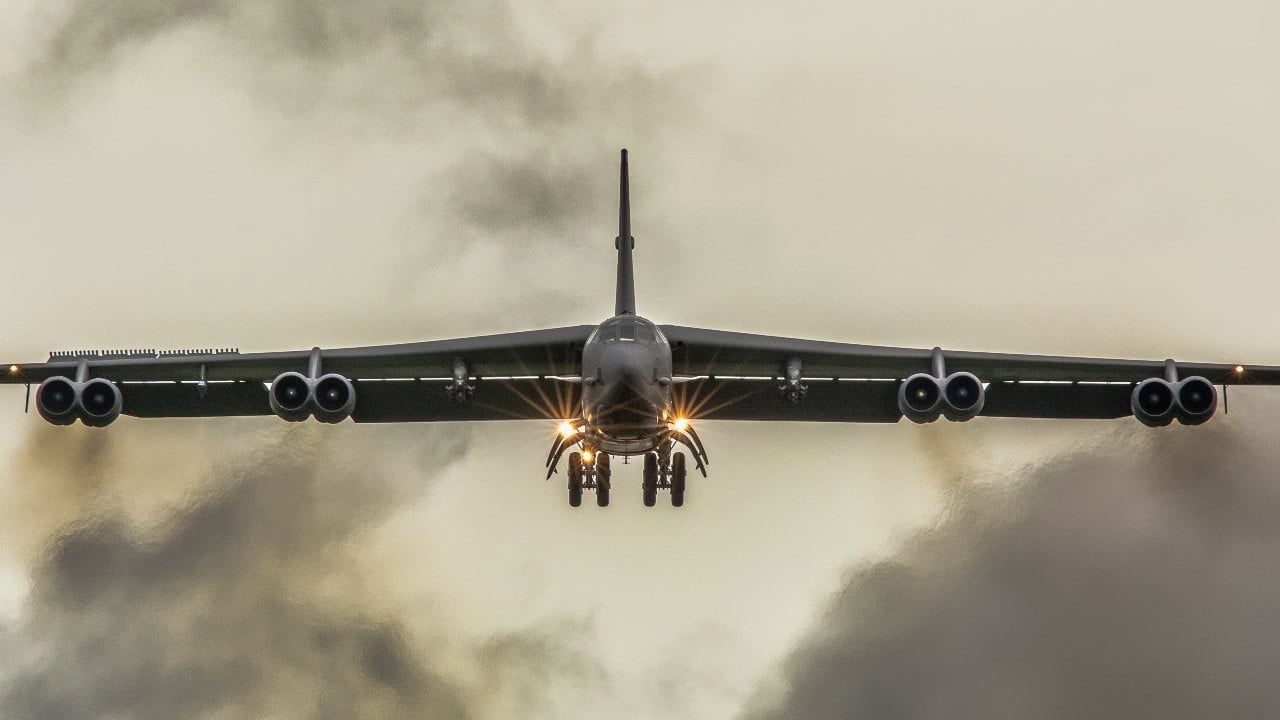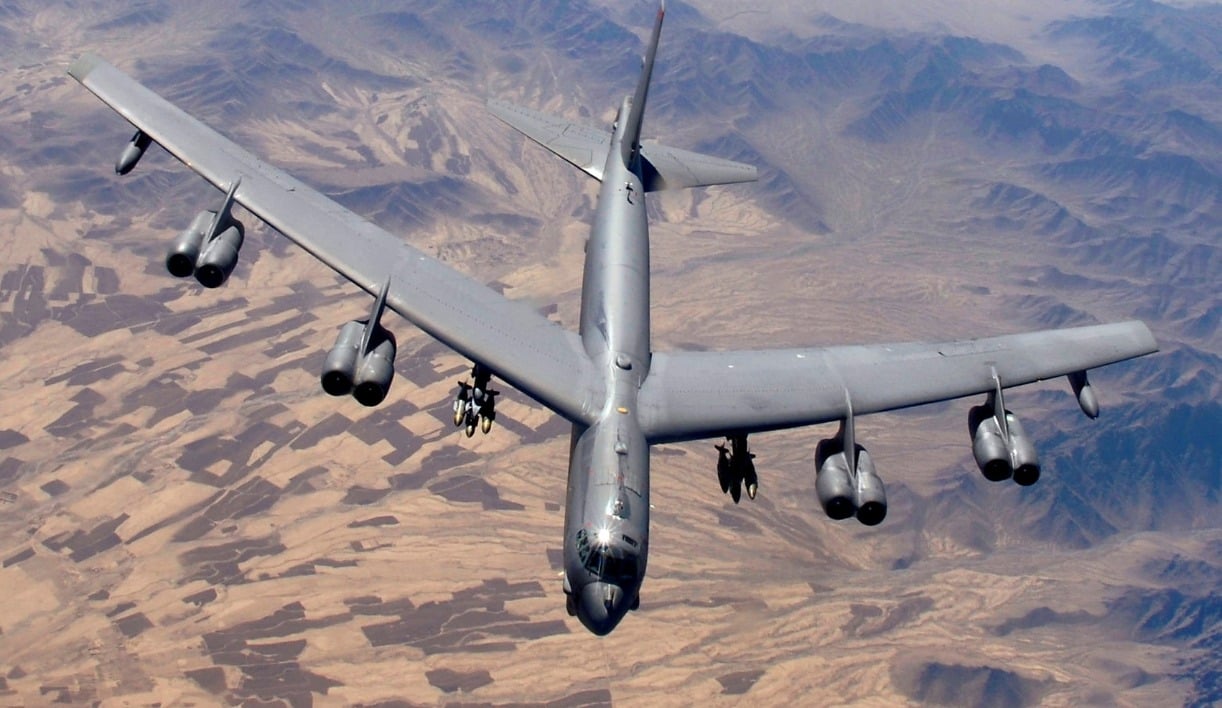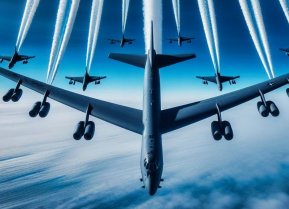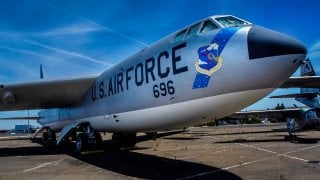The U.S. Air Force's B-52 Stratofortress Bomber Is Everywhere
The United States Air Force's B-52 Stratofortress bomber will continue to be flying for decades to come even though new stealth platforms like the B-21 Raider are coming soon.
The Cold War B-52 Bomber Is on the Move and Remains Unstoppable - The United States Air Force's B-52 Stratofortress bomber will continue to be flying for decades to come.
That point was made just last week as four B-52s assigned to the 5th Bomb Wing from Minot Air Force Base (AFB), North Dakota, landed at Andersen AFB, Guam, as part of a Bomber Task Force to support strategic deterrence missions aimed at reinforcing the rules-based international order in the Indo-Pacific region. Designed to showcase the U.S.’s ability to deter, deny and dominate, BTF missions aim to influence and dissuade aggression from adversaries or competitors.
While forward deployed to Guam, B-52 operations and support personnel are designated to the 23rd Expeditionary Bomb Squadron. The 23rd EBS will integrate alongside Allies and partners to demonstrate the U.S. commitment to security and stability throughout the region, the United States Air Force announced.
"It's great to finally receive our crews so we’re ready to go out and take part in the mission as well as get our maintenance personnel ready to support where they’re needed," said Capt. Zachary "Smash" Holmes, 23rd EBS weapons officer.
Holmes added that it was "finally have some iron on the ground," and affirmed, "we're ready to go."
Cope North for B-52 Stratofortress Bomber
The four bombers from Minot AFB were deployed to Guam to support the Pacific Air Forces' largest multilateral exercise, Cope North – scheduled from Feb. 5-23. It will be co-led by the Royal Australian Air Force and Japan's Air Self-Defense Force.
Approximately 1,700 U.S. Airmen, Marines, and Sailors will train alongside 700 Japan Air Self-Defense Force, Royal Australian Air Force, French Air and Space Force, Royal Canadian Air Force, and Republic of Korea Air Force service members in CN24. About 85 aircraft from the United States, Australia, Japan, France, and South Korea will fly 1,400 missions across three islands and six airfields, the U.S. Pacific Air Forces announced.
The three-week exercise will emphasize integrating airborne forces for large-scale and agile combat deployment, Air & Spaces Forces magazine reported, adding that aviators taking part in the exercise will contribute to agile operations conducted from remote airfields.
Established initially in 1978 as a quarterly bilateral exercise held at Misawa Air Base, Japan, Cope North moved to Andersen AFB in 1999, and became a trilateral exercise in 2012 with the addition of the Royal Australian Air Force. It is the U.S. Pacific Air Forces' largest annual multilateral exercise.
The Unstoppable B-52
Designed and built by Boeing in the early stages of the Cold War, the B-52 was developed to be a long-range bomber "capable of carrying out the strategic mission without dependence upon advanced and intermediate bases controlled by other countries."
As conceived, it would have been an evolution of the bombers that saw service during the Second World War, but in the decade between the end of that conflict and when the B-52 entered service, saw radical and rapid technological advancement. The first design proposal saw six propeller-driven engines and a straight wing – and that quickly progressed to the final prototype YB-52 with eight turbojet engines and swept wings.

The Stratofortress took its maiden flight in April 1952 and entered service less than three years later, in February 1955. Built to carry nuclear weapons, the B-52 replaced the Convair B-36 Peacemaker. Due to its massive size – its length is 159 feet, four inches, and it has a wingspan of 185 feet – and the fact that it can't be described as a "handsome" aircraft, it quickly earned the nickname "BUFF" (Big Ugly Fat Fella).
A total of 744 B-52s were produced in Seattle, Washington, and Wichita, Kansas, culminating with the B-52H model last delivered in 1962. It served as the main long-range heavy bomber of the Air Force during the Cold War and continues to be a critical part of the bomber force today.

Even though it lacks stealth capabilities, its large payload and ability to carry a wide variety of munitions, including long-range standoff missiles and hypersonic weapons, will ensure it can continue to be the workhorse in the sky for the Air Force. As a result, the legendary B-52 could reach 100 years in service by the time the platform is finally retired.
Author Experience and Expertise: Peter Suciu
Peter Suciu is a Michigan-based writer. He has contributed to more than four dozen magazines, newspapers, and websites with over 3,200 published pieces over a twenty-year career in journalism. He regularly writes about military hardware, firearms history, cybersecurity, politics, and international affairs. Peter is also a Contributing Writer for Forbes and Clearance Jobs. You can follow him on Twitter: @PeterSuciu. You can email the author: [email protected].


